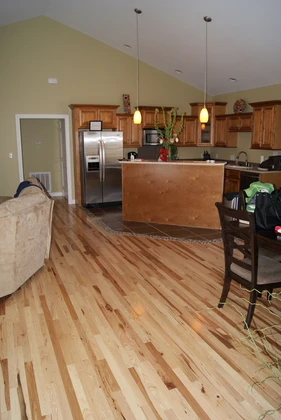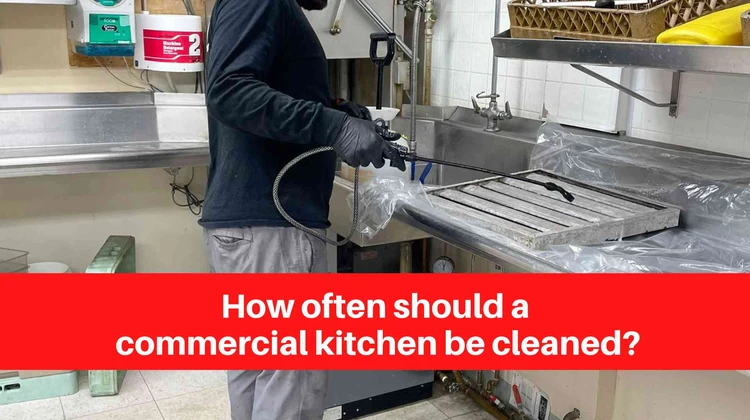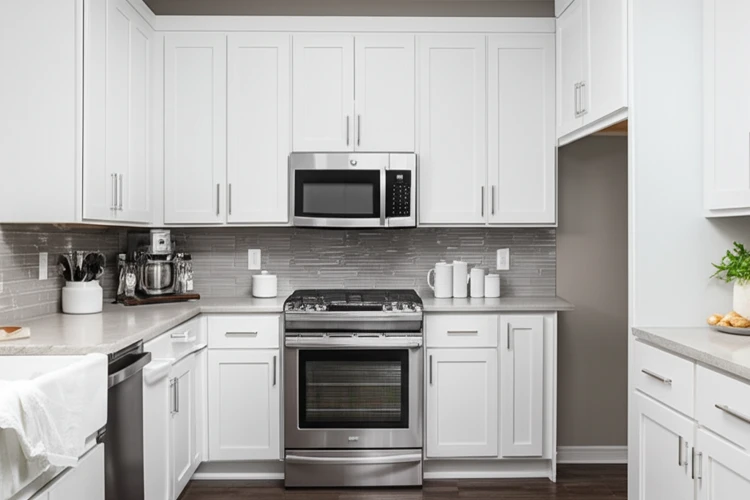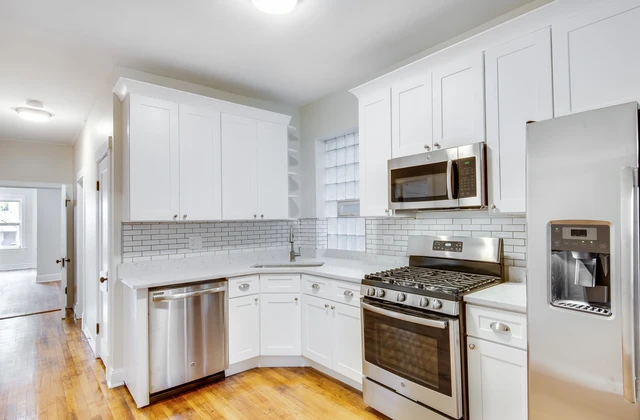Disclaimer: As an Amazon Associate, I earn commission from qualifying purchases.
The trend of outdoor kitchens has surged in recent years, driven by homeowners’ desire to extend their living spaces and enjoy alfresco dining experiences. According to a recent report by the National Kitchen & Bath Association, outdoor kitchens are now among the top requested features in home renovations. This trend not only enhances living spaces but also significantly boosts home value.
With over a decade of experience in kitchen design, we’ll delve into the essentials of outdoor kitchen design and cost, providing you with the tools to create a functional and aesthetically pleasing outdoor cooking area.
The Basics of Outdoor Kitchen Design
An outdoor kitchen is an outdoor space equipped with cooking appliances, countertops, and storage, mimicking the functionality of an indoor kitchen. There are several types of outdoor kitchens, including built-in, modular, and portable options. Built-in kitchens are permanent structures, often made with stone or brick, offering a seamless integration into your backyard. Modular kitchens consist of prefabricated units that can be easily assembled and reconfigured, providing flexibility. Portable kitchens, such as grill carts, are the most mobile and budget-friendly option, perfect for renters or those who frequently move.
Key components typically include grills, countertops, and storage. Grills are the cornerstone of any outdoor kitchen, with options ranging from gas to charcoal and electric models. Countertops provide workspace and can be made from durable materials like granite or stainless steel. Storage solutions, such as cabinets and drawers, help keep your outdoor kitchen organized and clutter-free.
Evaluating Your Outdoor Space
Assessing your outdoor space is crucial before starting your kitchen design. Here’s a step-by-step guide to help you evaluate your area effectively:
- Measure the Space: Use a tape measure to determine the dimensions of your available area. This will help you understand the scale of your outdoor kitchen and ensure you have enough room for all desired components.
- Consider Layout: Think about the flow of your outdoor kitchen. Ensure there is enough space for movement around appliances and seating areas.
- Climate Considerations: Evaluate your local climate. If you live in a region with harsh winters, consider materials and appliances that can withstand extreme temperatures.
Professional landscape design guidelines suggest designing around existing features like trees and patios to create a cohesive outdoor living space.
Key Components of an Outdoor Kitchen
Essential components of an outdoor kitchen include grills, refrigerators, sinks, and countertops. Choosing high-quality, weather-resistant materials is crucial for longevity. Stainless steel is a popular choice for grills and sinks due to its durability and resistance to rust. For countertops, materials like granite and concrete offer durability and a polished look.
High-quality brands like Weber and Lynx are known for their durable and reliable grills. When selecting appliances, consider expert reviews and industry publications to ensure you’re investing in top-tier products. For example, Lynx grills are praised for their superior construction and cooking performance, making them a solid investment.
Outdoor Kitchen Design Tips
Creating a functional and aesthetically pleasing outdoor kitchen involves careful planning. Here are some design tips to guide you:
- Layout Ideas: Consider a U-shaped layout for maximum efficiency, allowing easy movement between cooking, prep, and serving areas. An L-shaped layout can also work well, especially in smaller spaces.
- Color Schemes: Choose neutral colors like earth tones for a timeless look. Bright colors can add a playful touch, but be mindful of how they will age and integrate with your overall landscape.
- Material Choices: Opt for materials that complement your home’s exterior. For example, if your house has a brick façade, consider incorporating brick into your outdoor kitchen design for a cohesive look.
Professional kitchen designers often recommend integrating a mix of natural and synthetic materials to balance aesthetics and functionality.
Budgeting for Your Outdoor Kitchen
Setting a budget for your outdoor kitchen involves understanding the average costs of different components and labor. Here’s a breakdown to help you plan:
- Appliances: A high-quality grill can range from $1,000 to $5,000. Refrigerators and sinks typically cost between $500 and $2,000 each.
- Countertops: Materials like granite can cost $50 to $150 per square foot, while concrete is more affordable at $20 to $50 per square foot.
- Labor: Professional installation can add $5,000 to $20,000 to your budget, depending on the complexity of the design.
Recent market studies indicate that the average cost of a mid-range outdoor kitchen is around $10,000 to $15,000. Cost-saving tips include shopping during off-peak seasons for discounts and opting for modular units over custom builds.
Outdoor Kitchen Appliances
Outdoor kitchen appliances come in various types, each offering unique benefits. Grills are essential, with options like gas, charcoal, and electric models. Gas grills are popular for their convenience and ease of use, while charcoal grills offer a traditional smoky flavor. Smokers and pizza ovens add versatility, allowing you to cook a wider range of dishes.
Comparing different models and brands based on functionality and cost is essential. For example, the Weber Genesis II E-310 gas grill is praised for its even heat distribution and durability, making it a great mid-range option. Meanwhile, the Lynx Professional 36-Inch Built-In Gas Grill is a premium choice, known for its superior cooking performance and longevity.
Sustainable Outdoor Kitchen Design
Sustainability is increasingly important in outdoor kitchen design. Energy-efficient appliances, eco-friendly materials, and water-saving fixtures are key considerations. Opt for Energy Star-rated appliances to reduce energy consumption and choose materials like recycled glass or composite wood for countertops and cabinets.
Practical tips for reducing environmental impact include installing a rainwater harvesting system to water nearby plants and using solar-powered lighting to illuminate your outdoor space. Environmental studies highlight the benefits of sustainable design, including reduced energy bills and a lower carbon footprint.
DIY vs. Professional Installation
Deciding between DIY and professional installation depends on your skills, time commitment, and budget. DIY projects can save money but require a significant amount of time and expertise. Professional installation ensures high-quality workmanship but comes at a higher cost.
A balanced perspective is essential. While DIY can be rewarding, it may not be feasible for complex designs or if you lack the necessary skills. Professional services offer peace of mind and a warranty, ensuring the job is done right. Home improvement guides suggest that DIY is best for simple, modular kitchens, while professional help is advisable for custom builds.
Maintaining Your Outdoor Kitchen
Maintaining your outdoor kitchen involves regular cleaning, winterizing, and routine maintenance tasks. Here’s a step-by-step guide:
- Cleaning: Regularly clean your grill and countertops to remove grease and food residue. Use a mild detergent and warm water for most surfaces.
- Winterizing: Protect your appliances from cold weather by covering them and draining water lines to prevent freezing.
- Regular Maintenance: Inspect your kitchen annually for any signs of wear and tear. Replace worn-out parts and apply sealants to countertops to protect them from the elements.
Appliance manuals and industry guidelines recommend performing these tasks regularly to extend the lifespan of your outdoor kitchen.
Outdoor Kitchen Design Trends
Current trends in outdoor kitchen design include smart appliances, outdoor bars, and integrated seating areas. Smart appliances, like Bluetooth-enabled grills, allow you to monitor and control cooking from your smartphone. Outdoor bars add a social element, perfect for entertaining guests. Integrated seating ensures comfort and functionality, making your outdoor kitchen a true extension of your living space.
Practical advice on incorporating trends includes considering your lifestyle and how you plan to use the space. For example, if you frequently host gatherings, an outdoor bar might be a worthwhile investment.
Case Studies: Real-Life Outdoor Kitchens
Real-life case studies provide valuable insights into outdoor kitchen design challenges and solutions. For instance, a homeowner in California faced the challenge of creating an outdoor kitchen that blended seamlessly with their Mediterranean-style home. The solution involved using terra cotta tiles and stucco finishes, creating a cohesive and aesthetically pleasing outdoor space.
Another case study involved a family in Texas who wanted an outdoor kitchen that could withstand the state’s hot summers. The design incorporated a large pergola for shade and heat-resistant materials like stainless steel and concrete, ensuring durability and comfort.
Frequently Asked Questions (FAQs)
What are the most durable materials for an outdoor kitchen?
The most durable materials for an outdoor kitchen include stainless steel, granite, and concrete. Stainless steel is resistant to rust and corrosion, making it ideal for appliances and countertops. Granite and concrete are robust and can withstand various weather conditions, ensuring long-term durability.
How much does it typically cost to build an outdoor kitchen?
The cost of building an outdoor kitchen can vary widely depending on the size, materials, and complexity of the design. On average, a mid-range outdoor kitchen can cost between $10,000 and $15,000. High-end designs with custom features can exceed $30,000. Factors influencing cost include appliances, countertops, and labor.
Can I install an outdoor kitchen myself, or should I hire a professional?
Whether you should install an outdoor kitchen yourself depends on your skill level and the complexity of the design. Simple, modular kitchens can be DIY projects, saving on labor costs. However, complex designs with custom features may require professional installation to ensure quality and safety. Evaluate your capabilities and the project’s requirements before deciding.
What are the best appliances for an outdoor kitchen?
The best appliances for an outdoor kitchen include high-quality grills, refrigerators, and sinks. Brands like Weber, Lynx, and Bull are known for their durability and performance. When selecting appliances, consider your cooking needs, budget, and the climate in your region to ensure they can withstand outdoor conditions.
How can I make my outdoor kitchen more sustainable?
To make your outdoor kitchen more sustainable, opt for energy-efficient appliances, eco-friendly materials, and water-saving fixtures. Consider using recycled materials for countertops and cabinets, and install solar-powered lighting. Incorporating a rainwater harvesting system can also reduce water usage and support sustainable practices.
Conclusion
Creating a functional and beautiful outdoor kitchen requires careful planning, budgeting, and design considerations. By understanding the basics of outdoor kitchen design, evaluating your space, and choosing high-quality components, you can build an outdoor kitchen that enhances your living space and adds value to your home.
Whether you opt for DIY or professional installation, maintaining your outdoor kitchen is crucial for longevity. Embrace current design trends and sustainable practices to create an outdoor kitchen that you and your family can enjoy for years to come.







